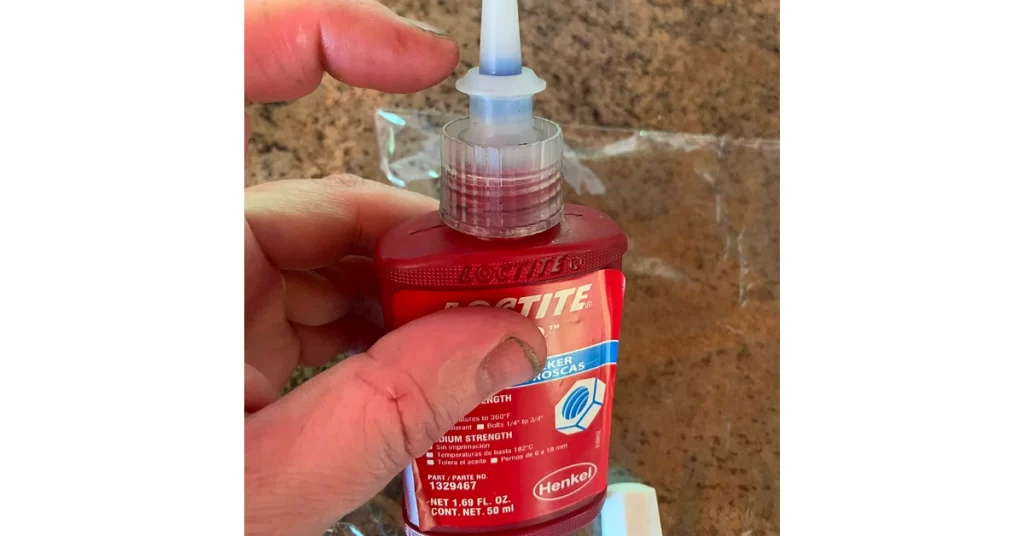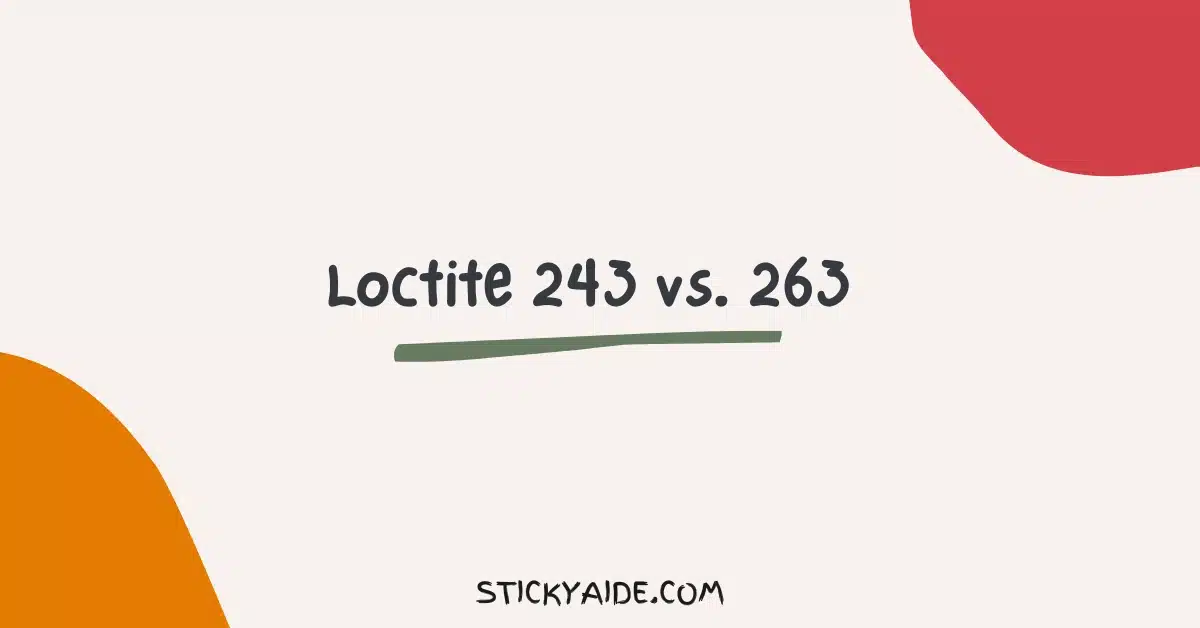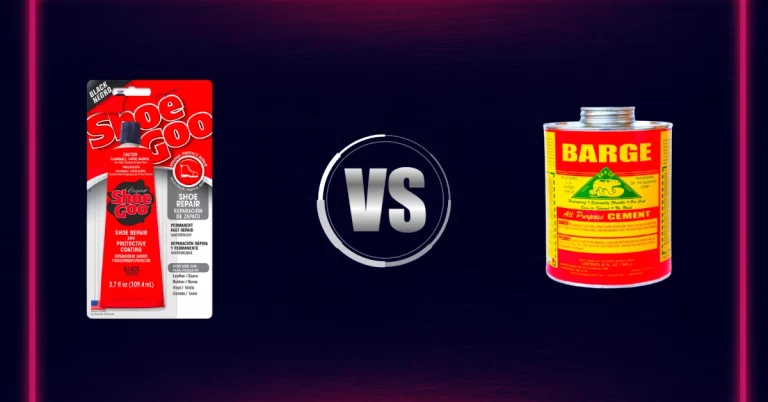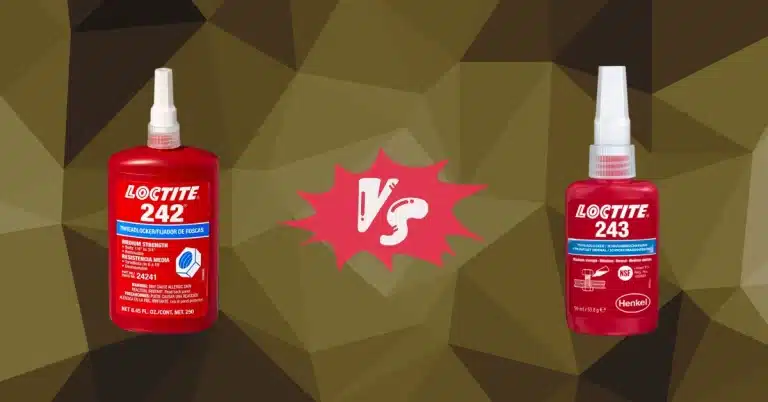You may require threadlockers for various uses and applications in your home, office, industrial, or other outdoor purposes. Loctite makes some of the best and most reliable adhesives and offers threadlockers in various strengths and for multiple sizes of fasteners or bolts.
Loctite threadlockers come in various colors, indicating their strength. Loctite 243 is a Blue threadlocker, while the 263 comes in Red. So, which one should you side with in the debate of Loctite 243 vs. 263? I’ll review the features and characteristics of Loctite 243 and 263 and how they differ.
Read More: Loctite 262 vs. 263 vs. 271
Loctite 243 vs. 263

Overview of Loctite 243
Loctite 243 is a medium-strength acrylic threadlocker manufactured by Loctite-Henkel. You can use Loctite 243 on fasteners or bolts with the risk of loosening due to shock or vibration.
Loctite 243 is a step from the previous 242 and offers better performance. You can use Loctite 243 for components with a risk of reaching high temperatures. Loctite 243 is capable of withstanding temperatures reaching up to 180°C. You can also use Loctite 243 for parts reaching a freezing point of -55°C.
Loctite 243 works well with all metals and on aluminum, stainless steel, and plated surfaces. Loctite 243 uses an oil-tolerant formula and is resistant to minor contamination from industrial oil, corrosion prevention oils, or other contaminants.
You can safely use Loctite 243 for components exposed to constant vibration, like gearboxes or pumps. You can use Loctite 243 to secure bolts up to M18 in size and can disassemble them using hand tools like a wrench.
Read More: Loctite 246 Vs. 243
Overview of Loctite 263
Loctite 263 is a high-strength threadlocker from Loctite-Henkel and comes in Red. Loctite 263 is a dual cure methacrylate-ester-based adhesive and offers a bond stronger than several other Loctite variants.
You can use Loctite 263 to permanently seal and lock threaded fasteners or bolts with the risk of exposure to high temperature, vibration, or shock. Loctite 263 is safe for components with the chance of temperature rising to 180°C or freezing parts up to -55°C.
Loctite 263 works with all metals and performs excellently with brass or copper. The 263 will also work for passive substrates like stainless steel. Like various Loctite threadlockers, the 263 is tolerant to minor contamination from corrosion prevention fluid, industrial oil, and other contaminants.
Loctite 263 is a heavy-strength industrial-grade threadlocker, and you can use it for various industrial or automotive equipment, like your gearbox. A complete cure of Loctite 263 can take up to 24 hours, but when the adhesive is appropriately set, it ensures a reduced risk of leakage or components loosening for shock or vibration.
The cure time of Loctite 263 depends on various aspects like – materials, substrates, bond gap, or temperature. You can reduce the cure time of Loctite 263 using an activator. You can use Loctite 263 for securing bolts with a thread size up to M20.
Read More: Loctite 222 vs. 243

Differences Between Loctite 243 And 263
Now let’s examine how Loctite 243 and Loctite 263 differ.
Ideal Uses and Removal
Loctite 243 is a medium-strength threadlocker and is blue, and you can use it for various indoor or outdoor equipment like – power equipment, mowers, and motors, among other components. Loctite 243 is tolerant to vibration, shock, and common industrial contaminations. You can remove Loctite 243 sealed fasteners or bolts using standard hand tools like a wrench.
On the other hand, Loctite 263 is an industrial-grade, high-strength threadlocker from Loctite-Henkel and comes in Red. It provides a higher adhesion strength than the 243, and you can use it for heavy-duty and industrial uses like – mounts, wheel studs, gearboxes, and pumps, among other components.
Loctite 263 creates a permanent bond once it’s completely cured, and if you plan to remove it in the future, you will need to use heat from an external source.
Compatibility
Loctite 243 can be used on fasteners with thread sizes up to M18.
Loctite 263 can be used for fasteners with thread sizes up to M20.
Fixture and Cure Time
Loctite 243 and 263 have similar fixture and cure times.
These threadlockers have a fixture time of 10 minutes, and a complete cure can take up to 24 hours.
Viscosity
Loctite 243 has medium viscosity and is thixotropic. The 243 has a viscosity rating of 2150.0 mPa·s.
On the other hand, the 263 has a lower viscosity of 500.0 mPa·s.
Read More: Loctite 263 vs. 272
Last Opinion
Loctite 243 and 263 are high-performance thread lockers suitable for various uses. So, which one should you side with in the battle between Loctite 243 vs. 263?
It depends on your intended uses. Loctite 243 is an excellent pick for various automotive and mechanical components. The 263 is great if you need a high-strength, industrial-grade thread locker.







